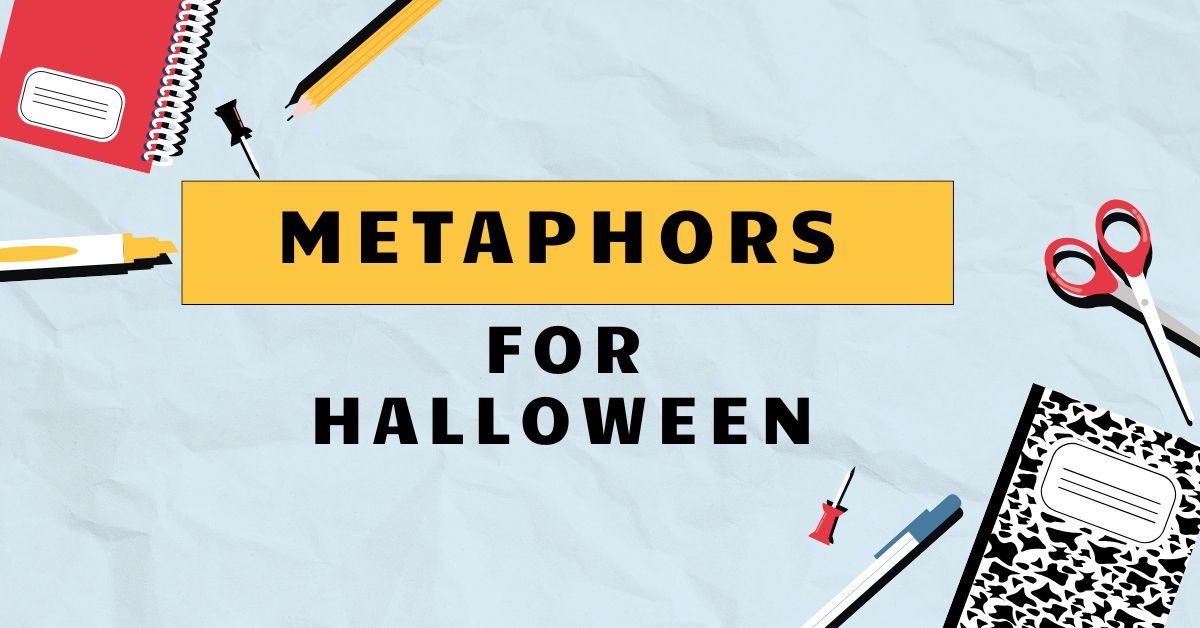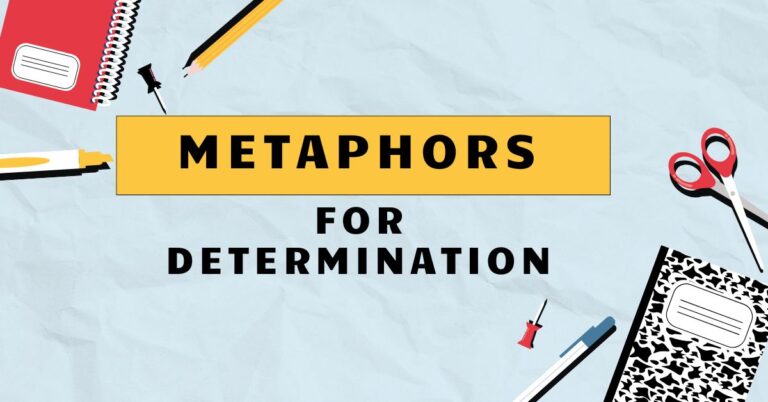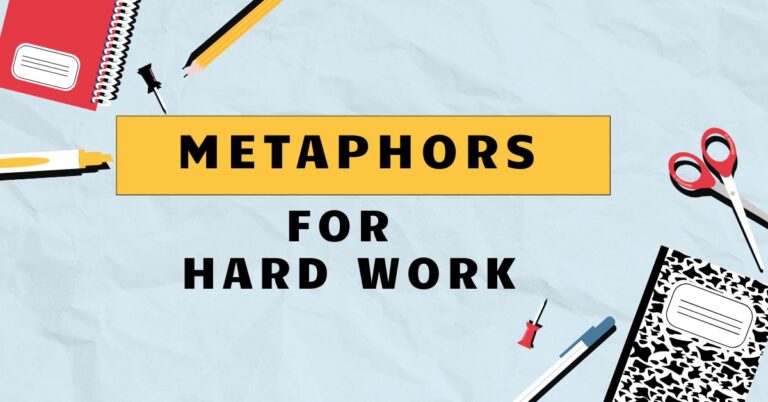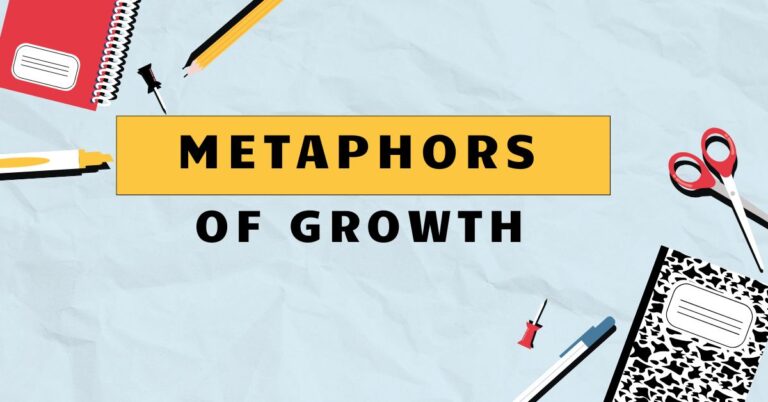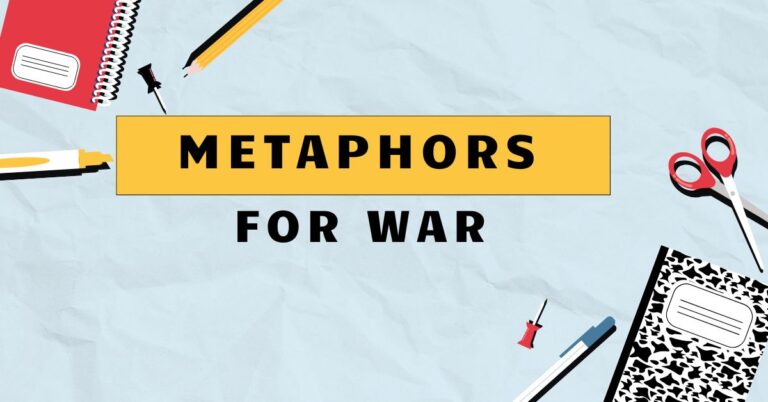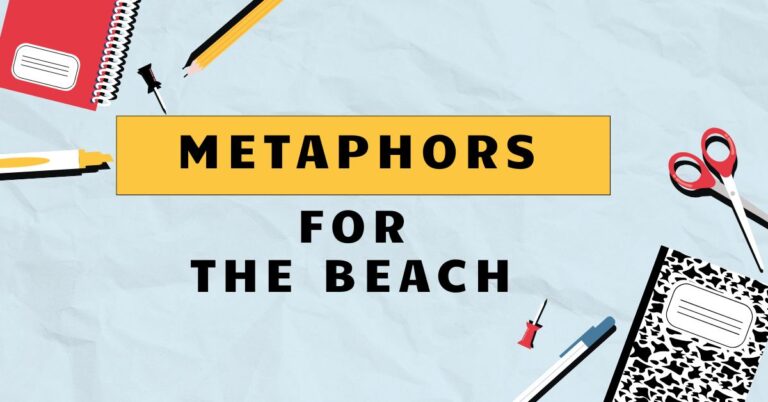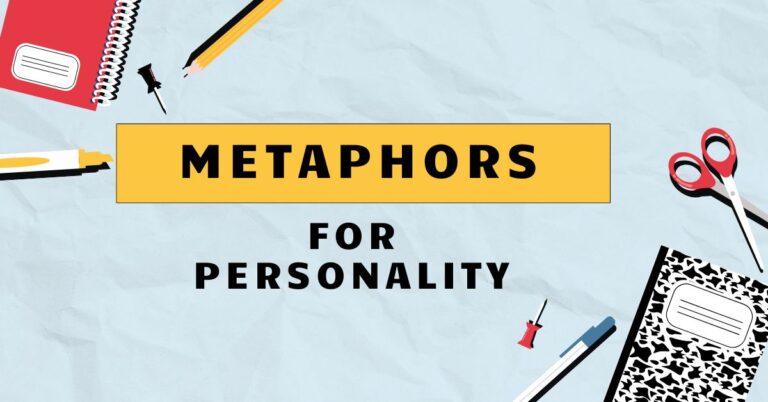27 Halloween Metaphors: Spooky Figures of Speech Explained
Metaphors are powerful tools in the English language, allowing us to express abstract ideas and create vivid imagery by comparing unrelated things. Understanding metaphors is crucial for interpreting literature, poetry, and everyday conversation.
This article explores the fascinating world of metaphors through a Halloween-themed lens, providing clear definitions, examples, and practice exercises. Whether you’re an English language learner, a student studying literature, or simply someone who enjoys playing with words, this guide will help you master the art of Halloween metaphors and enhance your understanding of figurative language.
Table of Contents
- Introduction
- What is a Metaphor?
- Structural Breakdown of Metaphors
- Types of Metaphors
- Halloween-Themed Metaphor Examples
- Usage Rules for Metaphors
- Common Mistakes with Metaphors
- Practice Exercises
- Advanced Topics in Metaphors
- Frequently Asked Questions
- Conclusion
What is a Metaphor?
Ametaphoris a figure of speech that directly compares two unrelated things, asserting that one thing *is* another, to highlight shared qualities or create a new understanding. Unlike similes, which use words like “like” or “as” to make comparisons, metaphors imply a direct equivalence.
The power of a metaphor lies in its ability to transfer attributes from one concept to another, enriching language and deepening meaning. It serves as a creative and imaginative tool for expression, enabling writers and speakers to convey complex ideas in an engaging and memorable way.
Metaphors are not merely decorative; they are fundamental to how we understand and communicate about the world. They help us make sense of abstract concepts by relating them to concrete experiences.
For instance, saying “life is a journey” uses the tangible concept of a journey to explain the abstract idea of life’s experiences and progression. This makes the abstract more relatable and understandable.
The context in which a metaphor is used significantly affects its interpretation. Therefore, understanding the cultural, social, and personal context is essential for grasping the full meaning of a metaphor.
Structural Breakdown of Metaphors
A metaphor typically consists of two main elements: thetenorand thevehicle. Thetenoris the subject to which metaphorical attributes are ascribed.
It is the concept or idea being described. Thevehicleis the object or concept whose attributes are borrowed or applied to the tenor.
The vehicle provides the frame of reference for understanding the tenor. For example, in the metaphor “The haunted house was a tomb,” the haunted house is the tenor, and the tomb is the vehicle.
The attributes of a tomb (e.g., darkness, silence, death) are transferred to the haunted house, creating a sense of dread and finality.
Thegroundrefers to the shared characteristics or similarities between the tenor and the vehicle that make the metaphor meaningful. It is the basis upon which the comparison is made.
Understanding the ground is crucial for interpreting the metaphor correctly. In the previous example, the ground might be the association of both a haunted house and a tomb with death, fear, and the unknown.
While not always explicitly stated, the ground is the underlying connection that allows the metaphor to resonate with the audience. Effective metaphors rely on a clear and relevant ground to create a powerful and insightful comparison.
Without a discernible ground, the metaphor may seem nonsensical or confusing.
Types of Metaphors
Standard Metaphors
Standard metaphorsare commonly used comparisons that are easily understood and widely recognized. They are often found in everyday language and literature.
Their familiarity makes them accessible and effective for conveying simple yet impactful ideas. These metaphors don’t require much thought to decipher, as their meanings are often culturally ingrained or universally understood.
They serve as a foundation for more complex metaphorical expressions.
For example, saying “He is a lion in battle” is a standard metaphor. The bravery and strength associated with a lion are directly attributed to the person, creating an immediate understanding of his courageous nature.
The effectiveness of standard metaphors lies in their simplicity and clarity, making them a reliable tool for communication.
Extended Metaphors
Extended metaphorsare metaphors that are sustained over several lines, paragraphs, or even an entire work. They involve a more complex and detailed comparison between the tenor and the vehicle, exploring multiple aspects of their relationship.
Extended metaphors allow for a deeper and more nuanced understanding of the subject matter, creating a richer and more engaging reading experience. They provide ample opportunity to develop the comparison, adding layers of meaning and interpretation.
Consider a poem where Halloween night is an extended metaphor for facing one’s fears. The poem might describe the darkness, the eerie sounds, and the costumed figures as representations of the challenges and anxieties one encounters in life.
Each element of Halloween night contributes to the overarching metaphor, building a comprehensive and thought-provoking analogy. The sustained nature of the extended metaphor allows for a more profound exploration of the underlying themes and ideas.
Mixed Metaphors
Mixed metaphorsoccur when two or more inconsistent metaphors are combined, often creating a nonsensical or humorous effect. They typically arise from a lack of careful thought or attention to the individual metaphors being used.
While sometimes used intentionally for comedic purposes, mixed metaphors usually detract from the clarity and effectiveness of the writing. They can confuse the reader and undermine the intended message.
An example of a mixed metaphor would be: “Let’s nip it in the bud before it snowballs out of the park.” The phrase combines “nip it in the bud” (stopping something early) with “snowballs out of the park” (escalating quickly and uncontrollably), creating a contradictory and illogical image. While the individual metaphors are understandable, their combination results in a confusing and ineffective statement.
Avoiding mixed metaphors requires careful attention to the individual images being created and ensuring they are consistent and coherent.
Dead Metaphors
Dead metaphorsare metaphors that have become so common and overused that they have lost their original figurative meaning and are now considered literal expressions. They are often used without conscious awareness of their metaphorical origins.
Dead metaphors are an integral part of everyday language, but their figurative roots are largely forgotten. They no longer evoke the same level of imagery or creativity as fresh, original metaphors.
The phrase “the leg of the table” is a dead metaphor. Originally, it was a metaphorical comparison between a table support and a human leg.
However, through repeated use, it has become a standard and literal term for the table’s support. Similarly, “falling in love” was once a vibrant metaphor, but it’s now a common expression devoid of its original figurative impact.
Recognizing dead metaphors helps us appreciate the evolution of language and the gradual transformation of figurative expressions into literal terms.
Halloween-Themed Metaphor Examples
Halloween, with its rich imagery and symbolism, provides a fertile ground for exploring metaphors. The following examples demonstrate how metaphors can be used to capture the essence of Halloween characters, settings, events, and emotions.
Character Metaphors
Halloween characters are often used metaphorically to represent different aspects of human nature or societal fears. Witches, vampires, and zombies, for example, can symbolize hidden desires, exploitation, or the decay of morality.
These characters become vehicles for exploring deeper themes and ideas.
The table below contains twenty examples of Halloween character metaphors, illustrating how these figures can be used to represent abstract concepts and human traits.
| Metaphor | Explanation |
|---|---|
| The witch was a storm of resentment. | The witch embodies powerful and destructive feelings of bitterness. |
| The vampire was a shadow of greed. | The vampire represents insatiable desire and exploitation. |
| The zombie was a blank canvas of despair. | The zombie symbolizes the emptiness and hopelessness of human existence. |
| The ghost was a whisper of the past. | The ghost embodies lingering memories and unresolved issues. |
| The werewolf was a beast of suppressed rage. | The werewolf signifies hidden anger and uncontrollable impulses. |
| The scarecrow was a sentinel of forgotten fears. | The scarecrow symbolizes the guarding of deep-seated anxieties. |
| The clown was a mask of hidden sorrow. | The clown represents the concealment of pain and sadness behind a cheerful facade. |
| The haunted house was a museum of regrets. | The haunted house embodies accumulated past mistakes and sorrows. |
| The mummy was a testament to ancient secrets. | The mummy represents the preservation of hidden knowledge and mysteries. |
| The black cat was an omen of approaching change. | The black cat symbolizes impending transformations and uncertainties. |
| The grim reaper was a collector of debts. | The grim reaper represents the inevitable consequence of mortality. |
| Dracula was an aristocrat of eternal night. | Dracula symbolizes timeless darkness and aristocratic decay. |
| Frankenstein’s monster was a collage of human failures. | Frankenstein’s monster represents the amalgamation of human imperfections. |
| The headless horseman was a phantom of unresolved vengeance. | The headless horseman symbolizes the pursuit of retribution from beyond the grave. |
| The siren was a melody of fatal attraction. | The siren represents irresistible but dangerous allure. |
| The possessed doll was a vessel of dark intentions. | The possessed doll symbolizes the housing of malevolent purposes. |
| The phantom was a melody of unresolved grief. | The phantom embodies the lingering sorrow of past losses. |
| The goblin was a sprite of mischievous chaos. | The goblin symbolizes playful but disruptive disorder. |
| The crypt keeper was a librarian of morbid tales. | The crypt keeper represents the preservation and telling of grim stories. |
| The banshee was a symphony of impending doom. | The banshee symbolizes the foreshadowing of inevitable tragedy. |
Setting Metaphors
Halloween settings, such as haunted houses, graveyards, and dark forests, are often used metaphorically to represent states of mind, emotional landscapes, or societal conditions. A haunted house, for instance, can symbolize a mind plagued by memories or a society burdened by its past.
The table below provides twenty examples of how Halloween settings can be used metaphorically to represent abstract concepts or emotional states.
| Metaphor | Explanation |
|---|---|
| The graveyard was a garden of forgotten dreams. | The graveyard symbolizes the place where aspirations and ambitions are buried. |
| The haunted house was a labyrinth of past traumas. | The haunted house represents a mind filled with unresolved pain and suffering. |
| The dark forest was a mirror of inner fears. | The dark forest symbolizes the hidden anxieties and uncertainties within oneself. |
| The abandoned asylum was a cage of broken minds. | The abandoned asylum embodies the confinement and suffering of mental illness. |
| The misty moors were a shroud of uncertainty. | The misty moors symbolize confusion and lack of clarity. |
| The crumbling castle was a monument to faded glory. | The crumbling castle represents the decay of past achievements and power. |
| The desolate village was a ghost of lost hope. | The desolate village symbolizes the absence of optimism and the presence of despair. |
| The pumpkin patch was a field of autumnal dreams. | The pumpkin patch embodies the hopes and aspirations associated with the fall season. |
| The corn maze was a puzzle of life’s choices. | The corn maze symbolizes the complexities and decisions one faces in life. |
| The witch’s cottage was a cauldron of brewing secrets. | The witch’s cottage represents the hidden and mysterious aspects of life. |
| The spiderweb was a trap of tangled desires. | The spiderweb symbolizes the ensnaring nature of wants and cravings. |
| The shadowy alley was a corridor of hidden intentions. | The shadowy alley represents secret motives and concealed actions. |
| The graveyard gate was a portal to the unknown. | The graveyard gate symbolizes the transition to the afterlife and the mysteries of death. |
| The flickering candlelight was a beacon of fragile hope. | The flickering candlelight represents the delicate and uncertain nature of optimism. |
| The howling wind was a lament of lost souls. | The howling wind symbolizes the sorrow and suffering of those who have passed. |
| The full moon was a spotlight on hidden fears. | The full moon represents the unveiling and magnification of inner anxieties. |
| The ancient oak was a guardian of forgotten stories. | The ancient oak symbolizes the preservation and protection of past narratives. |
| The abandoned carnival was a stage for broken dreams. | The abandoned carnival represents the unfulfilled aspirations and shattered illusions of life. |
| The eerie silence was a blanket of impending doom. | The eerie silence symbolizes the feeling of inevitable disaster. |
| The twisted branches were fingers of grasping despair. | The twisted branches represent the reaching and clinging to hopelessness. |
Event Metaphors
Halloween events, such as trick-or-treating, costume parties, and haunted hayrides, can be used metaphorically to represent different aspects of social interaction, personal transformation, or the confrontation with fear. These events become symbolic representations of broader experiences.
The following table includes twenty examples of Halloween event metaphors, illustrating how these activities can symbolize broader experiences and abstract concepts.
| Metaphor | Explanation |
|---|---|
| Trick-or-treating was a quest for fleeting happiness. | Trick-or-treating symbolizes the pursuit of temporary joy and satisfaction. |
| The costume party was a masquerade of hidden identities. | The costume party represents the concealing and revealing of true selves. |
| The haunted hayride was a journey through simulated fears. | The haunted hayride symbolizes the controlled experience of facing anxieties. |
| The pumpkin carving was a sculpting of inner expressions. | The pumpkin carving represents the shaping and revealing of personal feelings. |
| The bonfire was a beacon of communal warmth. | The bonfire symbolizes the shared comfort and unity of a group. |
| The ghost story was a mirror of collective anxieties. | The ghost story represents shared fears and cultural unease. |
| The costume contest was a competition of crafted illusions. | The costume contest symbolizes the striving for admiration and recognition through constructed appearances. |
| The haunted house visit was a confrontation with personal demons. | The haunted house visit represents the facing of inner struggles and challenges. |
| The Halloween parade was a procession of fantastical dreams. | The Halloween parade symbolizes the collective expression of imaginative visions. |
| The seance was a reaching for voices from the void. | The seance represents the attempt to connect with the unknown and the departed. |
| The bobbing for apples was a dive into playful chaos. | The bobbing for apples symbolizes engaging in lighthearted disorder and amusement. |
| The telling of fortunes was a glimpse into uncertain futures. | The telling of fortunes represents the seeking of insight into what lies ahead. |
| The Halloween feast was a celebration of autumnal abundance. | The Halloween feast symbolizes the enjoyment of the season’s plentiful harvest. |
| The decorating of the house was a crafting of eerie ambiance. | The decorating of the house represents the creation of a spooky and unsettling atmosphere. |
| The watching of horror movies was an indulgence in vicarious terror. | The watching of horror movies symbolizes the experiencing of fear through fictional narratives. |
| The visit to the corn maze was a navigation through life’s complexities. | The visit to the corn maze symbolizes the navigating of difficult and confusing situations. |
| The lighting of jack-o’-lanterns was an illumination of hidden spirits. | The lighting of jack-o’-lanterns represents the bringing to light of mysterious and unseen forces. |
| The giving of candy was a sharing of sweet delights. | The giving of candy symbolizes the spreading of joy and pleasure. |
| The carving of tombstones was a reflection on mortality. | The carving of tombstones represents the pondering of life’s end and the passage of time. |
| The creating of monster makeup was a transformation of self-image. | The creating of monster makeup symbolizes the altering of one’s appearance and perception. |
Emotional Metaphors
Emotions associated with Halloween, such as fear, excitement, and nostalgia, can be expressed metaphorically to create vivid and relatable imagery. Fear might be described as a “cold hand” gripping the heart, while excitement could be a “sparkling fire” in the eyes.
This table presents twenty examples of emotional metaphors related to Halloween, showcasing how feelings can be expressed through figurative language.
| Metaphor | Explanation |
|---|---|
| Fear was a cold hand gripping his heart. | Fear is described as a physical force causing distress. |
| Excitement was a sparkling fire in her eyes. | Excitement is portrayed as a bright and energetic light. |
| Nostalgia was a gentle ghost of Halloweens past. | Nostalgia is depicted as a faint and comforting memory. |
| Dread was a shadow creeping across the room. | Dread is described as an ominous and encroaching presence. |
| Anticipation was a drumbeat in his chest. | Anticipation is portrayed as a rhythmic and building sensation. |
| Loneliness was a silent graveyard on Halloween night. | Loneliness is depicted as an empty and desolate place. |
| Joy was a cascade of candy raining down. | Joy is described as an abundant and delightful shower. |
| Suspense was a tightening knot in her stomach. | Suspense is portrayed as a constricting and uncomfortable feeling. |
| Curiosity was a moth drawn to the flickering flame. | Curiosity is described as an irresistible attraction to the unknown. |
| Regret was a tombstone etching in his mind. | Regret is depicted as a permanent and painful reminder. |
| Hope was a faint glimmer in the haunted darkness. | Hope is portrayed as a small and fragile light in a scary situation. |
| Despair was an endless night with no dawn. | Despair is described as a continuous and hopeless darkness. |
| Peace was a quiet whisper among the rustling leaves. | Peace is depicted as a gentle and calming sound in nature. |
| Anger was a volcanic eruption of pent-up rage. | Anger is portrayed as a sudden and forceful outburst. |
| Grief was a bottomless pit swallowing her whole. | Grief is described as a deep and overwhelming void. |
| Relief was a weight lifting from his shoulders. | Relief is depicted as a physical burden being removed. |
| Surprise was a jolt of lightning in the dark. | Surprise is portrayed as a sudden and shocking event. |
| Confusion was a tangled web of eerie paths. | Confusion is described as a complex and disorienting maze. |
| Envy was a green-eyed monster lurking in her shadow. | Envy is depicted as a sinister and hidden presence. |
| Contentment was a warm blanket on a chilly night. | Contentment is portrayed as a comfortable and soothing sensation. |
Symbolic Metaphors
Halloween symbols, such as pumpkins, bats, and skeletons, often carry metaphorical weight, representing themes like transformation, darkness, and mortality. A pumpkin, for instance, can symbolize the potential for transformation, while a skeleton can represent the inevitability of death.
The table below provides twenty examples of Halloween symbolic metaphors, demonstrating how these symbols can represent deeper meanings and concepts.
| Metaphor | Explanation |
|---|---|
| The pumpkin was a canvas of autumnal transformation. | The pumpkin symbolizes the potential for change and creativity in the fall season. |
| The bat was a messenger of hidden nights. | The bat represents the secrets and mysteries of the darkness. |
| The skeleton was a reminder of life’s final act. | The skeleton symbolizes mortality and the ephemeral nature of existence. |
| The spiderweb was a testament to intricate traps. | The spiderweb represents the complexities and ensnaring qualities of life. |
| The black cat was a harbinger of mysterious luck. | The black cat symbolizes the unpredictable nature of fortune. |
| The full moon was a spotlight on the hidden self. | The full moon represents the revealing of inner truths and emotions. |
| The mask was a shield against the judging eyes. | The mask symbolizes protection from criticism and the hiding of true identity. |
| The candy corn was a symbol of fleeting sweetness. | The candy corn represents temporary pleasure and indulgence. |
| The ghost was a whisper of unfinished business. | The ghost symbolizes unresolved issues and lingering memories. |
| The cauldron was a vessel of brewing possibilities. | The cauldron represents the potential for creation and transformation. |
| The scarecrow was a guardian of empty fields. | The scarecrow symbolizes the protection of what is seemingly worthless or forgotten. |
| The tombstone was a marker of lives now past. | The tombstone represents the commemoration of those who have died. |
| The owl was a symbol of nocturnal wisdom. | The owl symbolizes knowledge and insight gained in the darkness. |
| The raven was a messenger of somber news. | The raven represents the delivery of grave or ominous tidings. |
| The zombie was a metaphor for mindless conformity. | The zombie symbolizes the lack of independent thought and the following of the crowd. |
| The witch’s broom was a vehicle for fantastical escape. | The witch’s broom represents the means of achieving imaginative freedom. |
| The vampire’s bite was a symbol of consuming desire. | The vampire’s bite symbolizes overwhelming wants and cravings. |
| The haunted house was a labyrinth of hidden fears. | The haunted house represents the complexities and challenges of facing inner anxieties. |
| The werewolf’s transformation was a mirror of inner turmoil. | The werewolf’s transformation symbolizes the struggle with conflicting emotions and impulses. |
| The jack-o’-lantern was a beacon of spooky delight. | The jack-o’-lantern represents the combination of fear and enjoyment. |
Usage Rules for Metaphors
Using metaphors effectively requires a keen understanding of their nuances and potential pitfalls. A good metaphor should be both imaginative and relevant, creating a clear and insightful connection between the tenor and the vehicle.
Avoid clichés and overused metaphors that have lost their impact. Instead, strive for originality and creativity in your comparisons.
Ensure that the metaphor aligns with the overall tone and purpose of your writing.
Clarity is paramount. The audience should be able to understand the intended meaning of the metaphor without undue effort.
If the comparison is too obscure or convoluted, it will fail to resonate and may even confuse the reader. Consistency is also important.
Avoid mixing metaphors that create conflicting or illogical images. Maintain a consistent and coherent metaphorical framework throughout your writing to enhance its impact and effectiveness.
Common Mistakes with Metaphors
One of the most common mistakes with metaphors is usingclichés. Overused metaphors like “time is money” or “a heart of gold” have lost their impact and can make your writing seem uninspired.
Strive for originality and find fresh ways to express your ideas. Another frequent error is creatingmixed metaphors, where inconsistent images are combined, resulting in confusion or unintentional humor.
For example, “We need to grab the bull by the horns and nip it in the bud” mixes two unrelated metaphors, creating a nonsensical image.
Another mistake is using metaphors that are tooobscureorcomplex. The audience should be able to understand the connection between the tenor and the vehicle without struggling.
If the metaphor requires too much interpretation, it will fail to resonate and may even alienate the reader. Always consider your audience and choose metaphors that are appropriate for their level of understanding.
Finally, be mindful of thetoneandcontextof your writing. A metaphor that works well in one situation may be inappropriate in another.
Consider the overall message you are trying to convey and choose metaphors that enhance and support that message.
Here are some examples of common mistakes with metaphors, along with corrections:
| Incorrect | Correct | Explanation |
|---|---|---|
| Time is money, so let’s not beat around the bush. | Time is valuable, so let’s be direct. | Avoid clichés like “time is money” and unrelated idioms. |
| We need to grab the bull by the horns and nip it in the bud. | We need to address the problem head-on before it escalates. | Avoid mixing unrelated metaphors. |
| His mind was a vast, purple ocean of existential angst. | His mind was filled with existential angst. | Avoid overly complex or obscure metaphors. |
| The project is a rollercoaster ride on a sinking ship. | The project is a challenging and risky endeavor. | Ensure the metaphor is consistent and logical. |
| She was a diamond in the rough, but she was also a wolf in sheep’s clothing. | She had hidden potential, but she was also deceptive. | Avoid contradictory metaphors. |
Practice Exercises
Exercise 1: Identifying Metaphors
Identify the metaphors in the following sentences. Explain what two things are being compared and what qualities are being transferred.
Underline the metaphor and write the explanation below each sentence.
| Question | Answer |
|---|---|
| 1. The haunted house was a tomb of forgotten memories. | The haunted house was a tomb of forgotten memories. Comparison: Haunted house and tomb. Qualities Transferred: Darkness, silence, death, forgotten. |
| 2. Her fear was a cold wind whispering through the trees. | Her fear was a cold wind whispering through the trees. Comparison: Fear and cold wind. Qualities Transferred: Chilling, unsettling, pervasive. |
| 3. The night was a black velvet cloak draped over the town. | The night was a black velvet cloak draped over the town. Comparison: Night and black velvet cloak. Qualities Transferred: Darkness, covering, enveloping. |
| 4. The zombie horde was a wave of relentless hunger. | The zombie horde was a wave of relentless hunger. Comparison: Zombie horde and wave. Qualities Transferred: Overwhelming, unstoppable, consuming. |
| 5. His anger was a jack-o’-lantern, glowing with a menacing light. | His anger was a jack-o’-lantern, glowing with a menacing light. Comparison: Anger and jack-o’-lantern. Qualities Transferred: Threatening, visible, intense. |
| 6. The witch’s laughter was a cackle of brewing mischief. | The witch’s laughter was a cackle of brewing mischief. Comparison: Witch’s laughter and brewing mischief. Qualities Transferred: Plotting, anticipation, delight in causing trouble. |
| 7. The graveyard was a silent city of stone residents. | The graveyard was a silent city of stone residents. Comparison: Graveyard and city. Qualities Transferred: Quiet, populated, permanent. |
| 8. The vampire’s gaze was a hypnotic spell, trapping its prey. | The vampire’s gaze was a hypnotic spell, trapping its prey. Comparison: Vampire’s gaze and hypnotic spell. Qualities Transferred: Enthralling, captivating, controlling. |
| 9. The costume party was a parade of disguised dreams. | The costume party was a parade of disguised dreams. Comparison: Costume party and parade. Qualities Transferred: Display, fantasy, hidden desires. |
| 10. The haunted forest was a maze of lurking shadows. | The haunted forest was a maze of lurking shadows. Comparison: Haunted forest and maze. Qualities Transferred: Confusing, dangerous, hidden. |
Exercise 2: Creating Halloween Metaphors
Create a metaphor for each of the following Halloween-related topics. Be creative and use vivid language!
| Topic | Your Metaphor |
|---|---|
| 1. A Ghost | A ghost is a whisper of unfinished stories, lingering in the halls of time. |
| 2. A Vampire | A vampire is a shadow of endless hunger, forever seeking its next victim. |
| 3. A Witch | A witch is a storm of suppressed power, brewing in the depths of the woods. |
| 4. A Zombie | A zombie is a blank canvas of decaying dreams, shuffling towards oblivion. |
| 5. Halloween Night | Halloween night is a black mirror reflecting our deepest fears and fantasies. |
| 6. Fear | Fear is an icy hand clutching at the heart, squeezing the breath from your lungs. |
| 7. A Haunted House | A haunted house is a library of sorrow, each room a chapter of pain. |
| 8. A Pumpkin | A pumpkin is a canvas of autumnal joy, carved with smiles and lit with hope. |

